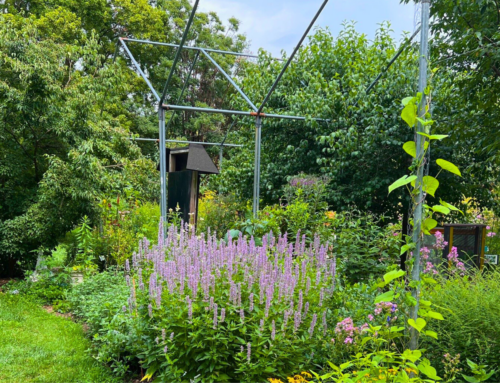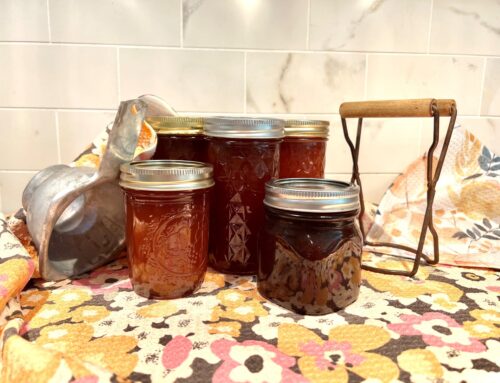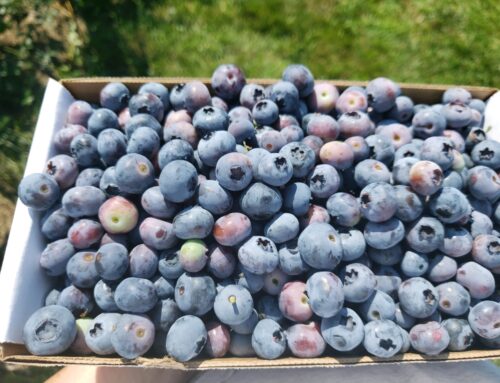We love seeing beautiful butterflies, industrious squash bees, the lovable bumblebee and even the occasional wasp. We know that they all help our vegetables produce more food and appreciate that. But do we still love our friends when they make quick meals of our cabbages and leave an awful mess behind? I’m not talking about our friends the groundhog and rabbit. At least they don’t leave surprises when you decide to cut open the cabbage and toss it in a boiling pot! Even though our cabbages and cauliflowers are harvested now, we need to know how these “friends” behave so we can not only get some edible food, but also help them live with us.
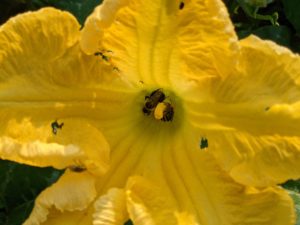
The two culprits that I’m referring to are the worms that make Swiss cheese out of our prized cabbage, broccoli and cauliflower (members of the Cruciferae or cabbage family). We are looking at two caterpillar culprits – the cabbage looper (Trichoplusia ni) and the cabbage worm (Pieris rapae).
Cabbage loopers, are caterpillars of a small moth (Trichoplusia ni) in the family Noctuidae, and in particular to the subfamily of cutworm Plusiinae. The wingspan of these grayish- brown moths is about 1.5 inches wide. In the larval stage, these smooth green caterpillars arch their backs when they walk, similar to how inch worms walk, as they only have legs in the front and very back. There is a thin white line along each side of the caterpillar and two white lines are found along its back. They prefer the lower green leaves when young, and can bore into the center of cabbage heads or move to the upper leaves of their host plant.
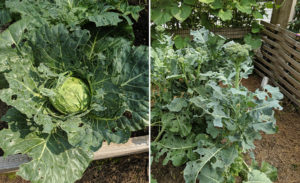
Trichopluisa ni overwinters as pupae in the soil or in cocoons on host plants. Adults emerge about the middle of April and larvae are present by late April or early May — ugh. This is prime cabbage planting and growing season. The moths are active at night and each female may lay 275 to 350 eggs singly on the upper surface of leaves. Larvae feed for two to four weeks before pupating. The pupal stage lasts for two weeks. With warm temperatures, the development of all cabbage looper stages – from egg to adult – takes about 18 to 25 days. Looper activity (egg-laying and larval feeding) will decrease as cool weather (50F) becomes common. There are three to five generations per year and activity continues through most of October in most years. Are we getting the picture of how difficult it is to grow clean cabbages with cabbage loopers?
Despite its name, cabbage looper is not limited to cabbage family plants, but may also damage plants as diverse as potato, tomato, pea, lettuce, spinach, nasturtium and carnation.
The next culprit is the Cabbage white butterflies (Pieris rapae) in the family Pieridae, and was introduced to Canada around 1860, spreading rapidly throughout North America. Their wingspan is also about 1.5 inches wide and they spend the winter as a chrysalis, emerging in the early spring in our area. These first spring butterflies quickly mature and lay eggs on our early crucifer crops and continue to do so through the summer. The caterpillars are velvety bluish-green with a lateral row of yellow dashes and a yellow mid-dorsal line. They are easily seen eating the plants, remaining in the sun for the majority of the day.
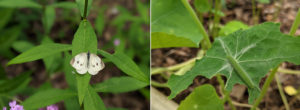
Female cabbage white and cabbage worm
The complete life cycle of this insect requires three to six weeks, depending on the weather. The number of generations reported annually is two to three in Canada, three in the New England states, three to five in California, and six to eight in the South. Imported cabbageworm can be found throughout the year in Florida.
Upon emergence from the chrysalis, the butterfly has a wingspan of about 4.5 to 6.5 cm. The body of the butterfly is covered with dense hair, which is colored white in females, but darker in males. The adult typically lives about three weeks. The female produces 300 to 400 eggs. The adult is very active during the daylight hours, often moving from the crop to flowering weeds to feed.
As caterpillars, these two unrelated garden pests look somewhat similar to caterpillars, and watching them walk is the easiest way to identify one from the other.
Does knowing who they are, help me grow better cabbages and broccoli? Well no, but knowledge of how they live will. What we know is that we will see some emerging by April and they will be looking for host plants. They are going to eat and grow, pupate, emerge and fly to find their mate. Then they will begin the cycle again by laying eggs — lots of eggs. This may occur two to three times all the way into 50F weather, which for southern Pennsylvania is around October, meaning that your vegetables will be targeted for the majority of that time. You have options.
Option 1: Use a physical barrier
They need to land on your plant to lay eggs. Stop them. By using row covers over the vegetable, you eliminate the butterfly or moth from landing and laying eggs. What sort of covers? Look for reemay (or remay) or floating row covers at your favorite store. Make sure you also pick up the hoops to keep the covers above your plants. The strategy then is to grow your cabbages and cauliflowers together for ease of handling.
Option 2: Companion Planting – Maybe
I have not seen this work but will mention it here as an option should you want to try it. Some folks insist that planting cabbages and cauliflower with lavender, tansy, chamomile, or even wormwood prevents an infestation. I’ve tried growing my cabbage with catmint, which failed. We would love to hear from you if you have success and what plants you used with what type of crop.
One planting that I do agree with,not only for cabbages and cauliflower, but for many of our crops, is to grow diverse plants. Having rows upon rows of cabbages is a recipe for disaster. You are advertising to the adult moths and butterflies to come visit.
Option 3: Hand to hand combat
Not squeamish? Grab a bucket of soapy water and start picking them off. This is usually a difficult process as the caterpillars will tunnel into the heads. Picking them is best done when they are young and are feasting on the outer leaves.
Option 4: Bt and Diatomaceous earth
Bt, or Bacillus thuringiensis, is a microbe naturally found in soil. There are many types of Bt and each will target different insects — beetles, mosquitoes, black flies, caterpillars and moths. Bt makes toxins that target insect larvae when eaten. In their gut, the toxins are activated. The activated toxin breaks down their gut, and the insects die of infection and starvation. Death can occur within a few hours or weeks. In contrast, when ingested by humans, the toxins are not activated and no harm occurs.
Diatomaceous earth is made from the fossilized remains of tiny, aquatic organisms called diatoms. It is not poisonous; it does not have to be eaten to be effective. Diatomaceous earth causes insects to dry out and die by absorbing the oils and fats from the cuticle of the insect’s exoskeleton. Its sharp edges are abrasive, speeding up the process. It remains effective as long as it is kept dry and undisturbed. It kills caterpillars by cutting through the surface of their skin. Larvae that produce a mucus membrane are less susceptible.
These products are considered organic, but they will kill all caterpillars including monarchs, swallowtails and many more. We have used both as a spot treatment and have decided to not grow certain varieties that are known to attract these moths and butterflies. For us, living in balance and finding a mutually beneficial solution was more important than harvesting green cabbage.
Option 5: Choose wisely
Chinese cabbage, turnip, mustard, rutabaga and kale are less preferred than cabbage, collards, Brussels sprouts, broccoli and cauliflower. Some cultivars of certain crops also have moderate levels of resistance. One resistance character is correlated with dark green, glossy leaves. This character shows resistance to cabbage worms and other caterpillars, but increases susceptibility to flea beetles. The red color found in many varieties also affects whether the butterfly will choose to lay eggs on the plant. Cabbage white butterflies avoid egg-laying (ovipositing) on red cabbage varieties. However, larval survival is favored by red cabbage. In other words, the red cabbage will have fewer eggs laid on them, but the ones that hatch will have caterpillars that are more robust!
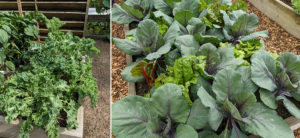
Plant kale and red cabbage instead
What does this mean? Consider rotating out green cabbage and cauliflower. Try growing instead napa cabbage or red cabbage. You will be showcasing two new dishes at your next family barbeque or picnic — kimchi and pink coleslaw!
We will be planting our fall crops in August and into September. We plan to add cabbage family members such as Chinese napa cabbage, broccoli rabe, red mustard, radish and the great white Chinese radish. While some foliage will be targeted, we know we will have a good crop and still be helping our friends both at the Media Food Bank and the ones in the garden. Happy planting and remember, we have a choice of what we eat — insects do not!


